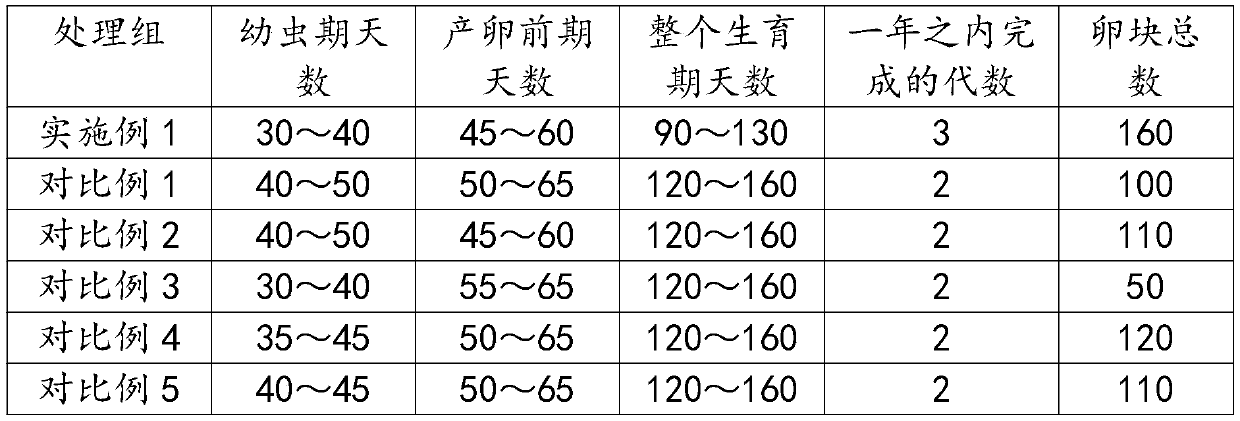Method for breeding ceracris kiangsu tsai
A breeding method, the technology of the yellow spine bamboo locust, applied in the direction of application, animal feed, animal feed, etc., can solve the problems of insect population growth and other problems, and achieve the effect of preventing nutritional differences
- Summary
- Abstract
- Description
- Claims
- Application Information
AI Technical Summary
Problems solved by technology
Method used
Image
Examples
Embodiment 1
[0036] (1) During April to May, collect the egg pieces of the yellow-ridged bamboo locust in the occurrence area of the yellow-ridged bamboo locust, bring the egg pieces back to the laboratory, place them in a white rectangular plastic box with soil blocks, and move them to the insect culture room for breeding. The temperature of the insect culture room is controlled at 25-30°C, and the photoperiod is light:dark=13:11h. Spray moisture to the egg mass soil layer at intervals of three days to accelerate egg mass hatching. The humidity of the spawning soil is 15% to 20%. The hatching period is 30 to 40 days. The newly hatched larvae are placed in feeding net cages and fed with fresh corn leaves, miscanthus leaves, and moso bamboo leaves. The hatching rate of the bamboo locust cultivated in the present embodiment reaches 78.1%.
[0037] (2) the bamboo locust feed of 1 age comprises the following raw materials in parts by weight: corn, miscanthus, moso bamboo are configured acc...
Embodiment 5
[0049] Adopt the raising method of embodiment 1 to raise the same batch of yellow-ridged bamboo locust adults, the difference is that corn, Miscanthus, moso bamboo are configured according to the ratio of quality 2:2:1 for the yellow-ridged bamboo locust to get food Miscanthus and feed, other Same conditions. The whole process of raising was observed, and the number of days of the whole larval period, pre-oviposition period and the whole growth period was counted. Simultaneously count the number of locust egg masses. The results are shown in Table 1.
PUM
 Login to View More
Login to View More Abstract
Description
Claims
Application Information
 Login to View More
Login to View More - R&D Engineer
- R&D Manager
- IP Professional
- Industry Leading Data Capabilities
- Powerful AI technology
- Patent DNA Extraction
Browse by: Latest US Patents, China's latest patents, Technical Efficacy Thesaurus, Application Domain, Technology Topic, Popular Technical Reports.
© 2024 PatSnap. All rights reserved.Legal|Privacy policy|Modern Slavery Act Transparency Statement|Sitemap|About US| Contact US: help@patsnap.com








